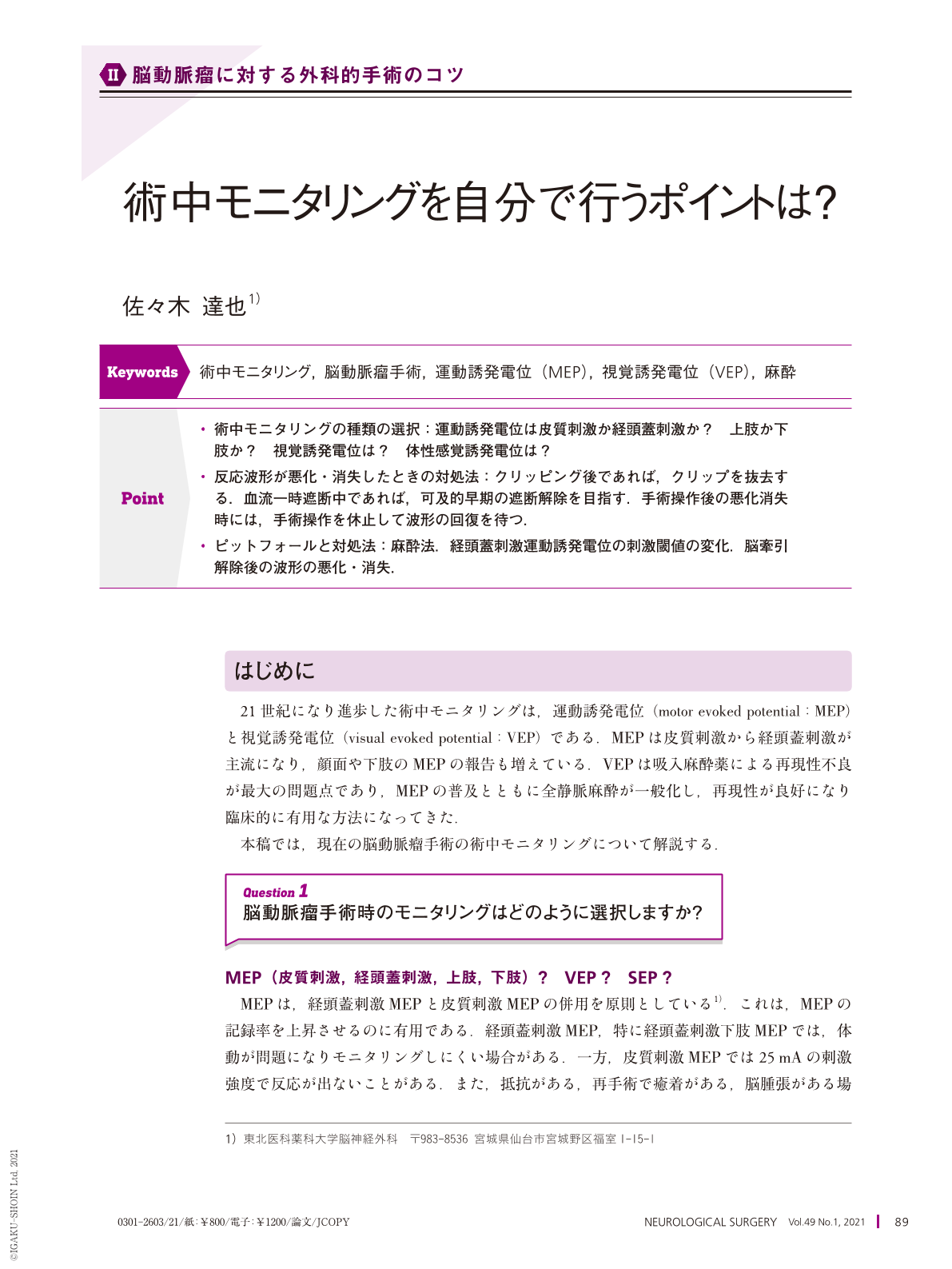Japanese
English
- 有料閲覧
- Abstract 文献概要
- 1ページ目 Look Inside
- 参考文献 Reference
Point
・術中モニタリングの種類の選択:運動誘発電位は皮質刺激か経頭蓋刺激か? 上肢か下肢か? 視覚誘発電位は? 体性感覚誘発電位は?
・反応波形が悪化・消失したときの対処法:クリッピング後であれば,クリップを抜去する.血流一時遮断中であれば,可及的早期の遮断解除を目指す.手術操作後の悪化消失時には,手術操作を休止して波形の回復を待つ.
・ピットフォールと対処法:麻酔法.経頭蓋刺激運動誘発電位の刺激閾値の変化.脳牽引解除後の波形の悪化・消失.
Intraoperative monitoring, which has advanced in the 21st century, consists of the motor evoked potential(MEP)and visual evoked potential(VEP). Transcranial stimulation has become the mainstream of MEP from cortical stimulation, and reports of MEP monitoring for the face and lower limbs are increasing. The biggest problem with VEP is poor reproducibility due to inhalation anesthetics. With the increase use of of MEP, total intravenous anesthesia has become common and reproducibility has improved, making it a clinically useful method. I will mention the key points of current intraoperative monitoring in cerebral aneurysm surgery.
1. Selection of type of intraoperative monitoring: Is MEP cortical stimulation or transcranial stimulation, upper limb or lower limb? What is VEP? What is somatosensory evoked potential?
2. What to do when the waveform deteriorates or disappears? Remove the clip after clipping. If the blood flow is temporarily occluded, release the occlusion as soon as possible. When the deterioration improves after this maneuver, it should be stopped until the waveform is restored.
3. Pitfall and coping method: Anesthesia method. Changes in the stimulation threshold of the transcranial stimulation MEPs. Deterioration/disappearance of MEP waveform after release of brain traction.

Copyright © 2021, Igaku-Shoin Ltd. All rights reserved.


